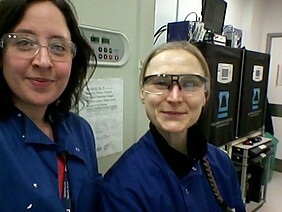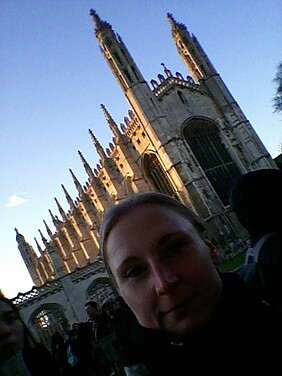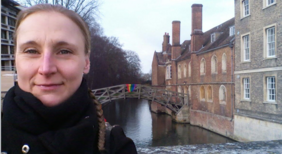In January 2017 I escaped the approaching North German winter and entered the milder climate of the United Kingdom to spend my 3 months Research Stay at the lab of Prof. Sadaf Farooqi in Cambridge.
Professor Farooqi is a leading expert of genetics and molecular mechanisms involved in the regulation of body weight, eating behaviour and obesity. Together with her team of research assistants, nurses, coordinators and physicians Prof. Farooqi started the Genetics of Obesity Study (GOOS), to investigate the influence of particular genes on eating behaviour, energy balance and body weight.
Within my project I´m studying effects of cold-activated brown adipose tissue (BAT) on human energy metabolism, in particular in healthy obese people. Therefore, it is a great opportunity for me to expand my methodological repertoire and look at genetic mechanisms that regulate cold-induced BAT activity, supervised –and always supported- by the very experienced members of the clinical and laboratory research team!
Apart from seeing the lab through my protective goggles I deeply immersed into the history of Cambridge and feel captured by the unique atmosphere of this ancient city. With one of the world's oldest universities and it´s many colleges Cambridge is renowned for its academic achievements and famous researchers, e.g. Stephen Hawking and Charles Darwin, to name just a few. I enjoy strolling through the historic city centre, was deeply impressed by the awe-inspiring King´s College, and sometimes wonder if I´ve just entered Hogwarts… Last but not least: Looking so inconspicuous, the Mathematical Bridge at Queen´s College mirrors the essence of scientific progress very well: Not only it bridges two sites formerly unconnected, even more it appears as an arch –but in fact is constructed of straight wooden beams.
Science is never getting tired of reminding us that reality very often is not what it seems like at first glance!






